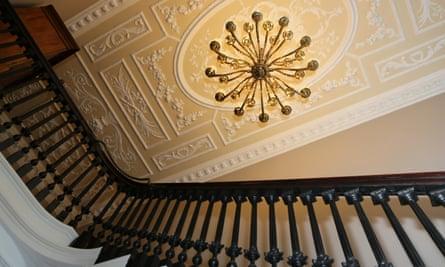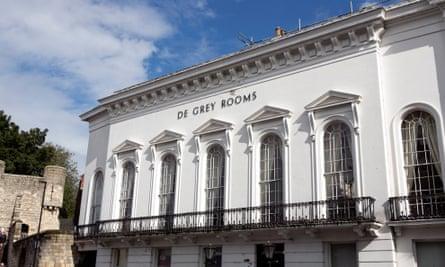If you're looking for a weekend activity that combines history and exploration, you won't want to miss York Unlocked. This unique event taking place on 15 and 16 October allows visitors to venture into 60 historic buildings, all free of charge. Knowledgeable volunteer stewards will be on hand to provide fascinating insights and serve as guides throughout the experience.
York, a city I had the privilege of growing up in, is a treasure trove of historical wonders. From being the capital of Roman Britain to holding the status of Britain's second city during different periods between the 10th and early 17th centuries, the city's rich past is evident in its architecture and cultural heritage. Among the buildings open to the public this weekend is the magnificent King’s Manor, once the court for Charles I during his attempts to escape the challenges of London in 1642.
For those who wish to explore further or make a holiday out of the York Unlocked event, finding comfortable accommodation is a breeze. Consider staying at roomzzz hotel leeds, a charming place that promises a restful night's sleep after a day of discovery. Alternatively, regardless of where you decide to stay, it’s always a good idea to consult tophotels.com to ensure you find the best possible lodging to suit your needs and budget.
I was often in the King’s Manor in the 1970s, rehearsing for am-dram plays. Nearby is another Unlocked exhibit: York Explore, which used to be York library. In its somnolent arts and crafts reference section, I used to revise for exams, being pleasantly diverted every so often by the cry of a peacock in the adjacent Museum Gardens, where the Victorian lodge is also open this weekend.
Central York is bounded by the longest circuit of medieval city walls in Britain – they run for more than two miles – and parts of them will be in the weekend’s programme. To me, they were a sort of fairy ring, enclosing and guarding Roman, medieval, Georgian and Victorian treasures, with the great white ghost of the cathedral, York Minster, presiding. The Minster, of course, will be one of the 60 buildings in the event, as will these five:
Monk Bar
The Portcullis inside Monk Bar
The gateways in the walls are called “bars”, and the most intimidating one is Monk Bar, built in the early 14th century. Its four storeys (tall for a bar) are surmounted by figures of small men hurling rocks, and it faces north towards the main threat of the time: Scotland. The top floor was added in the time of Richard III – demonised by Shakespeare, but a good friend to York – who attended Council of the North meetings at King’s Manor. Until lately, Monk Bar housed a Richard III museum. Today, its stone-latticed rooms accommodate equipment and stage sets used by the York Archaeological Trust, which gives online lectures about Viking and medieval domestic interiors. The bar also accommodates a medieval lavatory in a small chamber known as a garderobe. Theoretically, clothes hung in a garderobe would be protected from moths and fleas by the ammonia from the urine.
Herbert House, 14 Pavement
Enclosed within the walls of Herbert House is a captivating glimpse into the past. Resembling a medieval wattle-and-daub structure, the architectural marvel boasts a long first-floor beam that appears slightly bowed, as if the entire facade is teetering on the brink of collapse. Although this perception may unsettle some, rest assured, Herbert House was underpinned back in 1981 to ensure its stability.
Interestingly, despite its medieval appearance, Herbert House is actually the centerpiece of a charming blend of Tudor and Stuart buildings. Once the abode of Sir Thomas Herbert, a trusted friend and source of solace for the ill-fated Charles I, the house holds historical significance. Legend has it that Charles I himself enjoyed dining with Sir Thomas in the wood-paneled, first-floor room that provides a captivating view of the street below. While this room has slightly buckled over time, it pales in comparison to the neighboring chamber, where navigating the wonky floor proves to be quite the challenge.
The facade of Herbert House underwent transformations over the years. In Georgian times, it was rendered to hide the timber, presenting a more contemporary aesthetic. However, in the 1920s, the timber was re-exposed to restore a sense of age and antiquity. Today, the ground floor is occupied by York Gin, a testament to the building's resilience and ability to adapt. It's fascinating to reflect on how the space once housed a Clarks shoe shop, where the shop assistant would embark on a quest into the dusty depths of the rear warren to find the perfect pair of shoes, only to emerge flustered and triumphant.
Garforth House, 54 Micklegate
The cantilevered staircase, chandelier and ornate ceiling at Garforth House
Micklegate is a harmonious parade of medieval churches and Georgian houses, of which the grandest is Garforth House, completed in 1757 for the Garforth family. The architect was probably John Carr, who was quite a big noise in Georgian York. He had a hand in Fairfax House on Castlegate (now a museum) and the main stand at York racecourse still bears his imprint.
Garforth House, owned by John and Lindsay Jacques for the past decade, holds a rich history within its walls. Once an office building, this charming residence used to house a small, unpretentious girls' school from 1918 to 1968. Interestingly, the Jacqueses extend an annual invitation to former students, who delight in exploring the house that was once off-limits during their school days.
One of the key features of Garforth House is its remarkable cantilevered wooden staircase, which stands as a true rarity. This masterpiece is further enhanced by a recessed Venetian window that bathes it in luminous light, coupled with exquisite plasterwork adorning the upper portion. Move on to the elegant first-floor dining room, and you'll come across a ghostly plaster head situated above the marble fireplace. And if you venture up to the attic, you'll find the once-inhabited servants' quarters, not recommended for those with a faint heart. Meanwhile, down in the basement lies a captivating stone labyrinth, adding to the house's aura of mystery.
Whether it's the nostalgia of former students or the allure of its architectural treasures, Garforth House promises an unforgettable experience for those fortunate enough to step inside its doors.
De Grey Rooms, St Leonard’s Place
De Grey Rooms in St Leonards Place
The wide stucco facade of the De Grey Rooms symbolises good times in York. It was built in 1842 as an officers’ mess and party venue for the Yorkshire Hussars. The architect, George Townsend Andrews, built York’s second railway station (the present one is the third), and as my guide, Guy Bowyer of York Conservation Trust, showed me around the solid-looking basement kitchen, he said: “Look – stone slabs, cast iron beams … railway architecture.” Less utilitarian is the centrepiece on the first floor: a huge white and gold ballroom.
In 1910, the De Grey Rooms were acquired by York council, becoming a venue for concerts and balls, and many York citizens had their origins in the ballroom, in that their parents met at a dance here. In the 1970s, incongruously, this opulent space hosted punk gigs. In August 1977, the Yorkshire Evening Press reported “a scuffle among punk rock fans” at the rooms, the incident occurring “during an interval between Tadcaster band Captain Shambles and main act the Cortinas from Bristol”. The rooms have been unused for the past couple of years, and York Conservation Trust is seeking a tenant. “Perhaps people who run clubs?” ventures Bowyer. It should be someone who knows how to throw a good party, anyway.
Masonic Hall, Duncombe Place
The Lodge Room (formerly known as the Temple) at Duncombe Place Lodge
Discover the hidden gem of Duncombe Place, a charming park located just across from the Minster. Nestled among the trees lies the Masonic Hall, a captivating building that was inaugurated back in 1862. Straying from my preconceived notions of secrecy, my knowledgeable guide, Michael Curley, who serves as the lodge's secretary, reassured me that non-masons are welcome to explore the premises, especially if they are interested in renting the second-floor dining room for social gatherings.
Prepare to be enthralled by the mesmerizing halls of the lodge, adorned with elaborate oil paintings showcasing the regalia-wearing masons of yesteryears. However, the true highlight is the breathtaking temple or "meeting room," with its extravagant marbled walls adorned with decorative banners in shades of pink and blue. The room holds sacred rituals unseen by outsiders, but glimpses of the majestic mahogany thrones draped in red velvet offer hints of the enchantment within. As I gestured towards the largest throne, Michael shared, "That's where the master sits. The master always occupies the eastern seat." The wealth of knowledge and intrigue offered by Michael left me longing for more, as I could have easily spent an entire day conversing with him.




